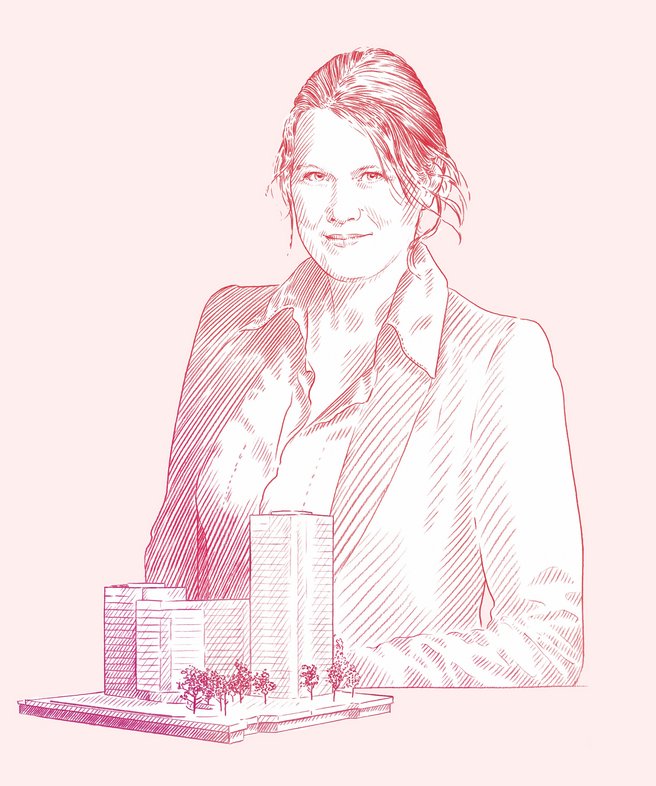JUST ONE WORD

On my everyday work I deal with how we want to live, work and learn in the future. As architects, we leave a lasting impact on a city’s image and people’s living environments. I have to be able to imagine myself in different positions to be able to combine all the requirements for a building into one concept. I consider what the building has to offer the individual. What added value can it have for all of a city’s residents? What does the client expect from the building and what contribution does it make to the city in question?
In the design of a building, proportions have a decisive impact on its effect. The materials being used are also just as important—they can drastically transform the atmosphere of a space. To visualize the context in which a building is going to be created, we build physical models, which help us see the big picture. Three-dimensional representations allow us to experience the atmosphere of the interior fittings. We must also be sensitive to long-term future trends. We need to think far ahead, after all: up to ten years can pass before a design becomes a built reality.
"During the Bauhaus era, architects were convinced that they could directly influence people with the spaces they built. Today the approach is reversed. We design spaces that are adapted to the needs of the public."
Many living concepts of the past are now outdated. For instance, office structures from the 1970s and 80s no longer fit with the present day. The way that we want to work now and in the future has radically changed. Office spaces are now often designed to resemble a campus. Special use areas are integrated into them, such as a fitness studio, childcare facilities and a restaurant open to the public. It’s in keeping with the times that work and other facets of life are spatially compatible with one another.
How we can sustainably implement projects has also become a central aspect of our work. Furthermore, the desire for a third space in addition to spaces for living and working is also growing—an area where people can be out in public without having to purchase or consume anything. The demands placed on architecture are continually changing—and the requirements of my job are changing with them. This also keeps me constantly rediscovering my surroundings anew.